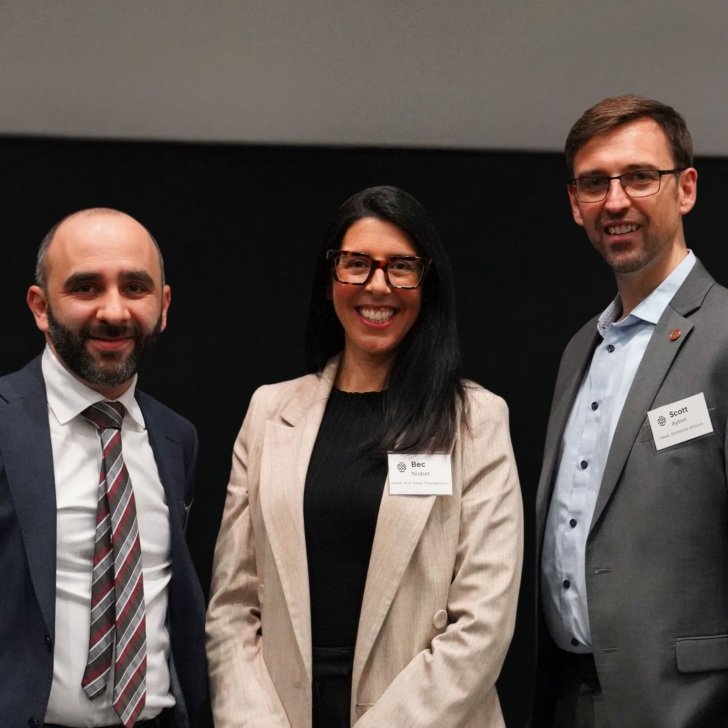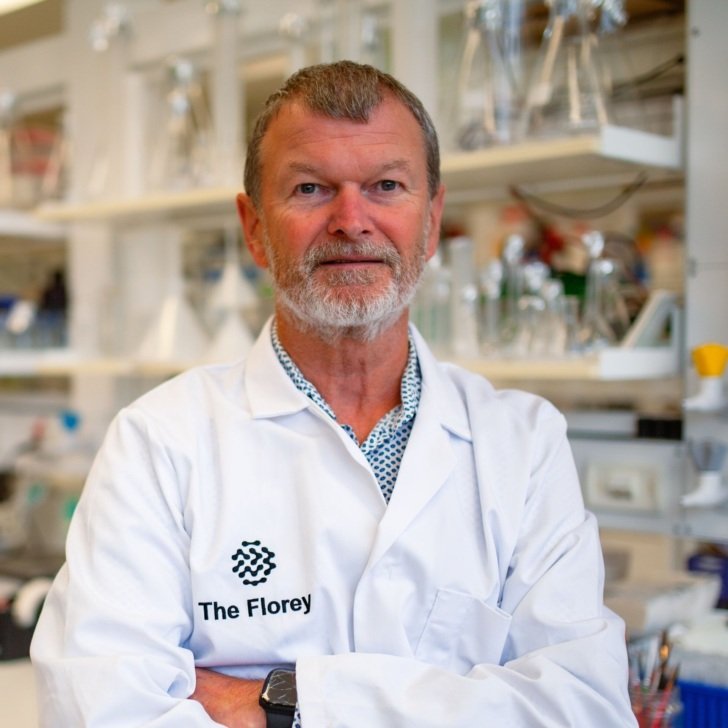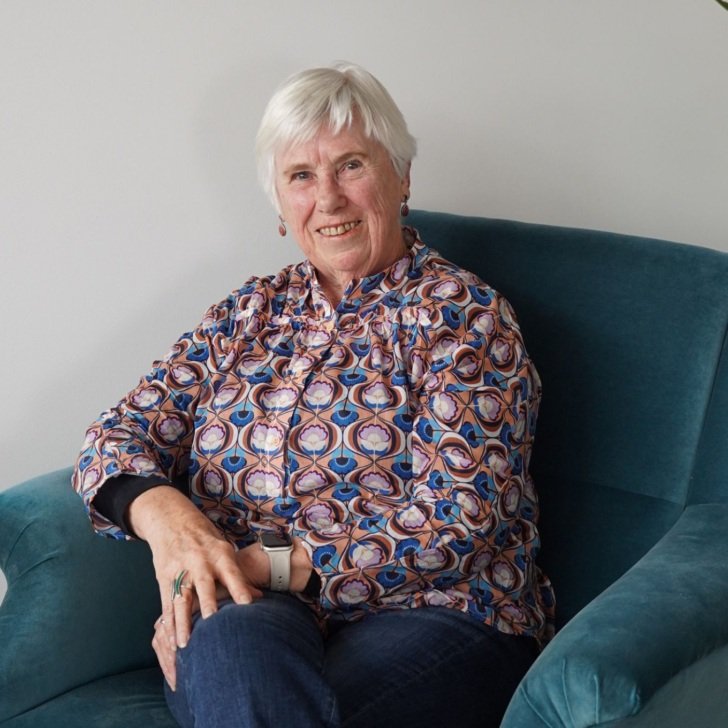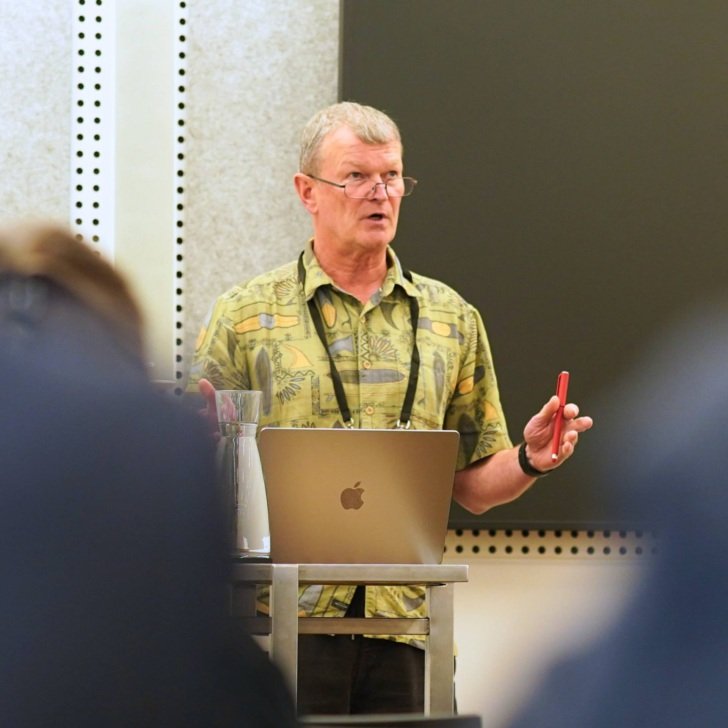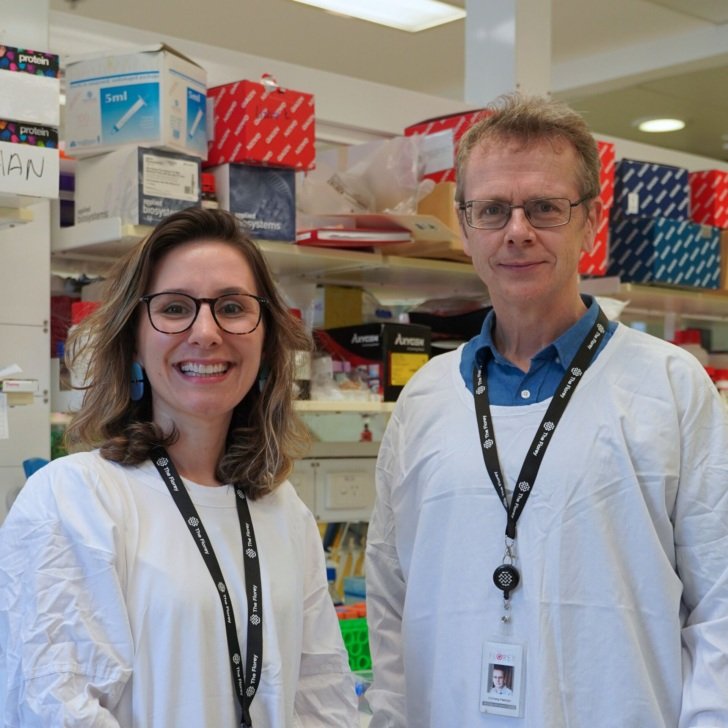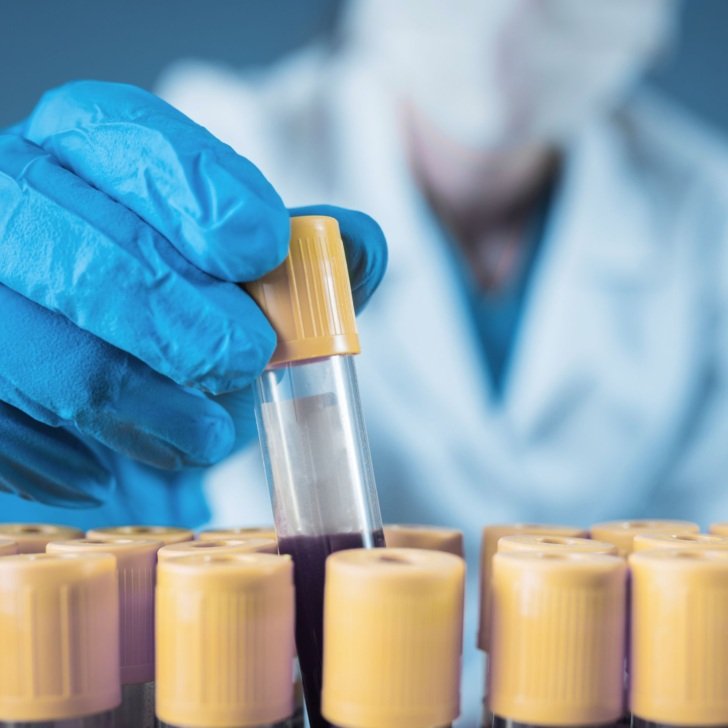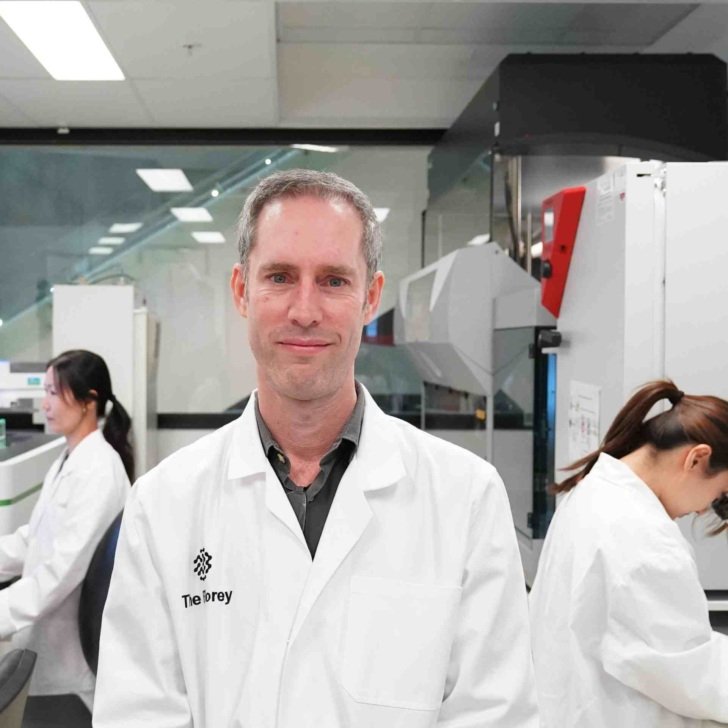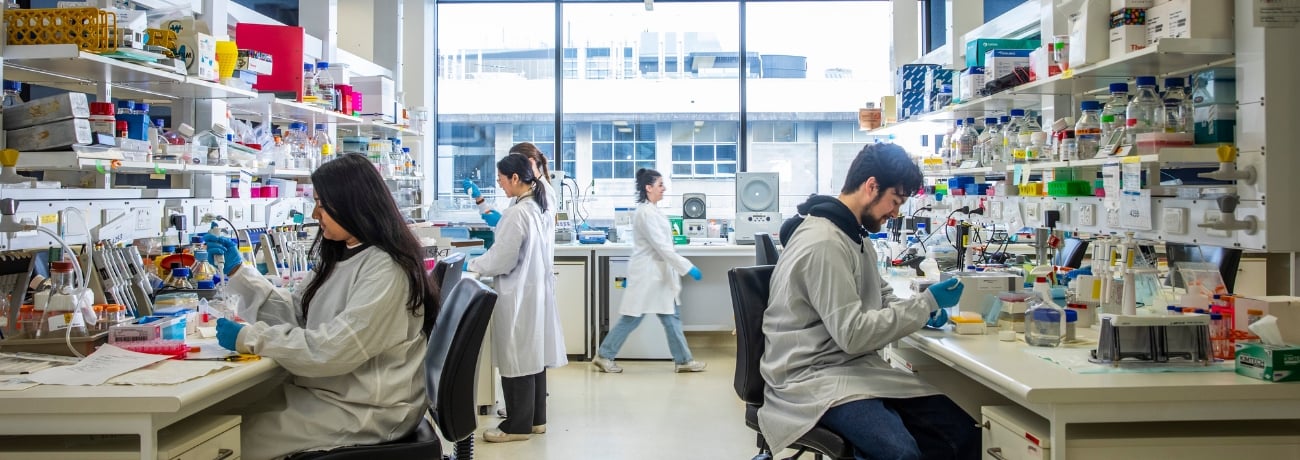- Florey researchers have engineered mice with similar characteristics to human HCN1 epilepsy, a rare and severe form of epilepsy called developmental and epileptic encephalopathy (DEE), caused by a mutation in the HCN1 gene.
- Researchers are now developing new precision medicines they hope will address the underlying problem, not just the symptoms.
Ebony’s story
When Tim Boehm, the father of a then 18-month-old baby girl named Ebony with a severe form of rare genetic epilepsy, reached out to Professor Chris Reid at The Florey he couldn’t have imagined how it would go on to change their lives.
Professor Reid and PhD student, Lauren Bleakley, have worked tirelessly over the past 4 years to improve life for Ebony, her family and other children through world-first research. Here, we share their story.
As reported by The Herald Sun, Ebony Boehm, a four year-old with a rare and severe type of epilepsy, is pinning her hopes of a better life on a team of driven researchers more than 700km away and a mouse who also bears her name.
In the world-first project, Melbourne scientists have created a mouse that mimics the same seizure condition that has robbed the Barossa girl of a normal development, due to the electrical storm in her brain.
The researchers from the Florey Institute of Neuroscience and Mental Health are using the mouse to test existing and new treatments upon, to help Ebony the girl avoid a damaging roundabout of medication trial and errors. They are also developing their own promising treatments.
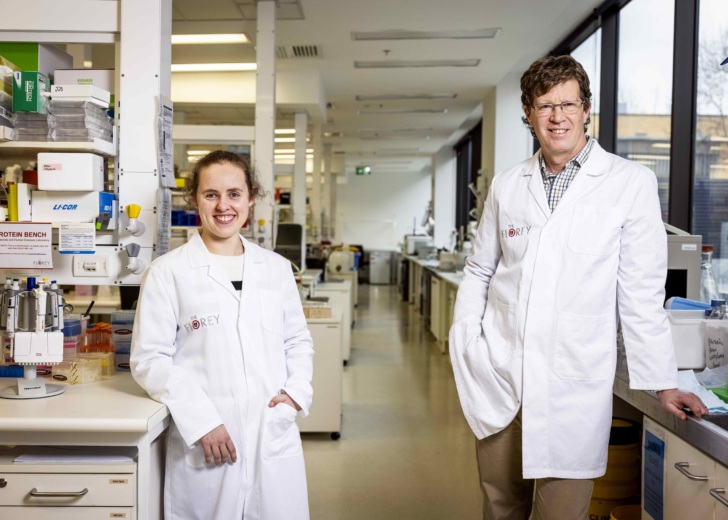
The research has already identified some medications to avoid as it could make her condition worse and has given her parents Tim and Alli some promising options to have up their sleeve.
“We’re very hopeful that further understanding from research will be able to help, or even solve, Ebony’s condition,” Mr Boehm said.
Professor Chris Reid said their model also gave them hope for better treatments for other genetic epilepsies and other rare diseases.
“This a tool with the potential to not only help the 50 patients we know have this condition currently around the world, but the hundreds and hundreds that are going to be born with this mutation, unfortunately, moving forward,” he said.
Ebony was just 12 weeks old when she had her first seizure. Genetic testing revealed the Tanunda baby had a rare and severe form of epilepsy called developmental and epileptic encephalopathy (DEE), caused by a mutation in her HCN1 gene.
It was a trial-and-error process over many months to find a useful medication combination. One common drug made seizures 20 times worse. Others came with potential side effects including vision loss, kidney and liver damage.
By the age of six months, a three-drug combination got Ebony home and to the point where seizure symptoms consisted of feeling ill and a fever.
At this stage, Ebony couldn’t even hold a toy. The anti-seizure medications were so sedating that she couldn’t suck or swallow anymore, and needed a nasal feeding tube.
Through work colleagues, Mr Boehm heard about a neuroscientist who had been researching this specific mechanism in the brain for more than 20 years.
Mr Boehm fired off a desperate email to Professor Reid, who leads the 11-person Neurophysiology of Excitable Networks Laboratory at The Florey, and the relationship began.
When Ebony was around 18 months, her family organised a raffle that raised $14,500 to kick-start the research. PhD student Lauren Bleakley took the reigns of the Ebony Mouse Project.
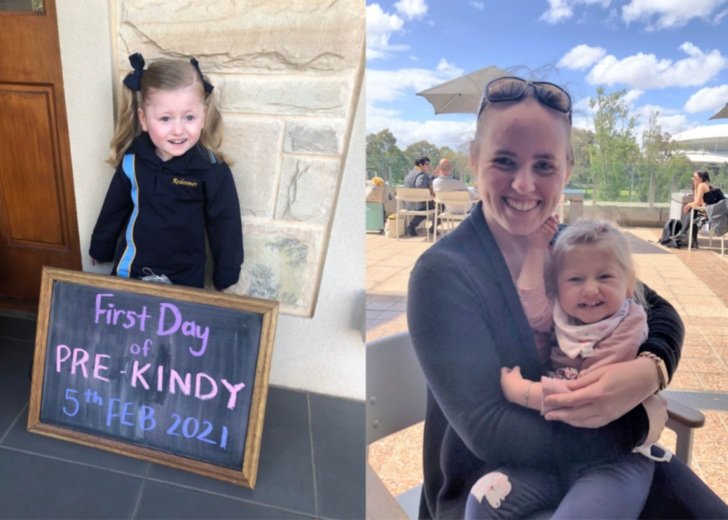
And in a landmark paper, published earlier this year in the prestigious journal Brain, the team showed that they had in fact been able to engineer mice with similar characteristics to human HCN1 epilepsy patients. These mice, too, had spontaneous seizures, a learning deficit and similar responses as Ebony to the anti-epileptic drugs.
Veterinarians and animal care staff sit on the Florey Institute’s Animal Ethics Committee, dedicated to overseeing the ethical, humane and responsible care of the institute’s test subjects, and the Ebony Mouse Project has its approval.
The genetic mutation Ebony carries affects the HCNI channel in the brain, the function of which is to stabilise how excitable our neurons get. In Ebony’s case, instead of opening and closing in response to cell activity, her channel is always open and so leads to seizures.
The Florey researchers have so far tested 11 antiepileptic drugs in the mice. “We have found another drug that looks in the mice, at least, to be even more effective than the drug Ebony is currently on,” Ms Bleakley said.
Researchers are now developing new precision medicines they hope will address the underlying problem, not just the symptoms.
“We’ve discovered a small molecule that is looking quite promising,” Professor Reid said.
In the meantime, Ebony’s parents saviour the seizure free weeks. Despite being armed with just 20 words, Ebony will demand hugs and kisses off each visitor her house.
“For her to be able to walk and communicate better would be amazing,” said Mr Boehm.
It’s exciting to think that hopefully a family down the track doesn’t need to go through the same pain as we did to find a medicine that works.
You can help fund our researchers to develop targeted treatments for Ebony’s epilepsy. Your support will give Ebony and children like her the best chance for a full and healthy life. Consider giving today: gofundme.com/research-for-ebony




